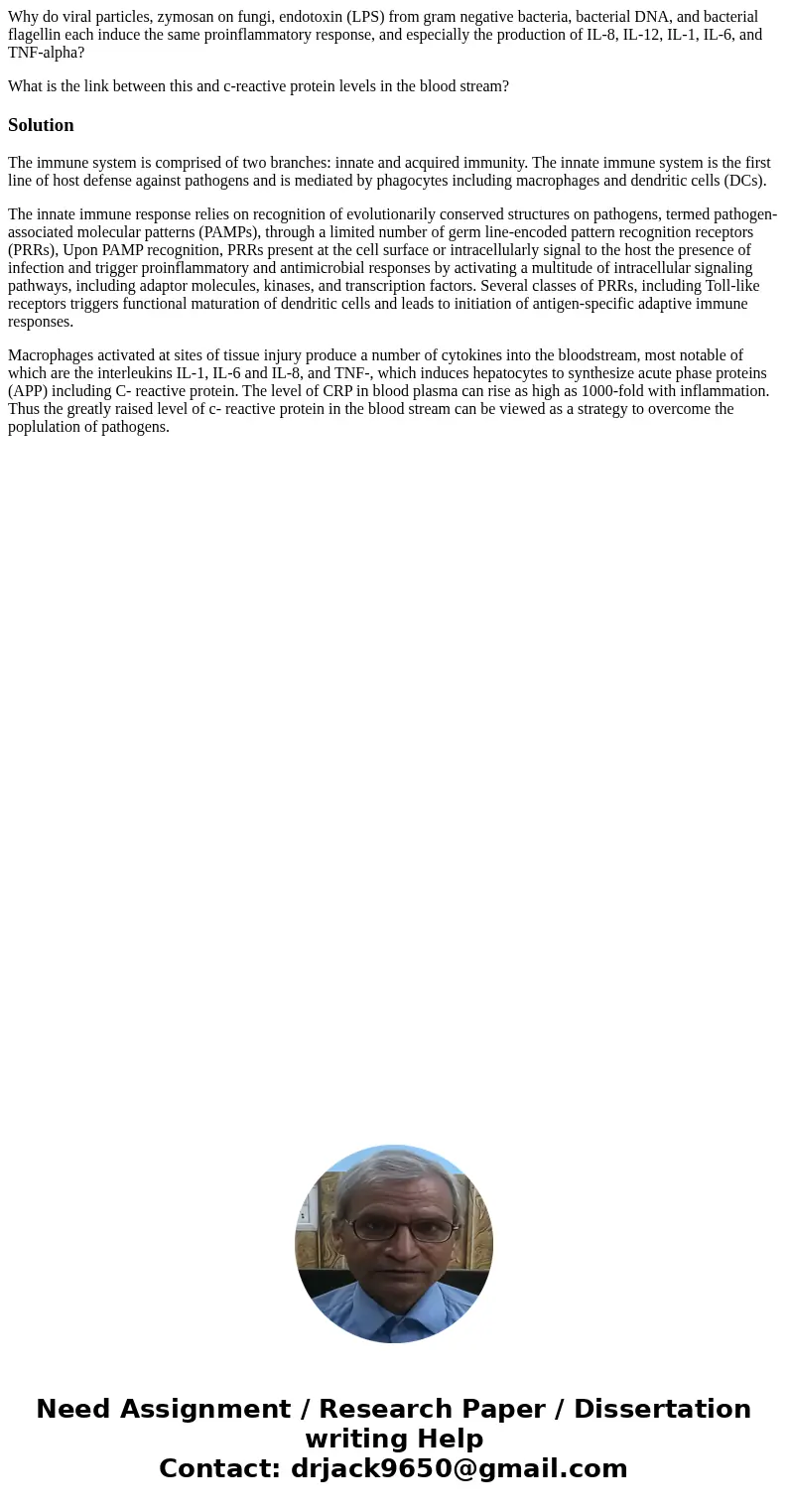Why do viral particles zymosan on fungi endotoxin LPS from g
Why do viral particles, zymosan on fungi, endotoxin (LPS) from gram negative bacteria, bacterial DNA, and bacterial flagellin each induce the same proinflammatory response, and especially the production of IL-8, IL-12, IL-1, IL-6, and TNF-alpha?
What is the link between this and c-reactive protein levels in the blood stream?
Solution
The immune system is comprised of two branches: innate and acquired immunity. The innate immune system is the first line of host defense against pathogens and is mediated by phagocytes including macrophages and dendritic cells (DCs).
The innate immune response relies on recognition of evolutionarily conserved structures on pathogens, termed pathogen-associated molecular patterns (PAMPs), through a limited number of germ line-encoded pattern recognition receptors (PRRs), Upon PAMP recognition, PRRs present at the cell surface or intracellularly signal to the host the presence of infection and trigger proinflammatory and antimicrobial responses by activating a multitude of intracellular signaling pathways, including adaptor molecules, kinases, and transcription factors. Several classes of PRRs, including Toll-like receptors triggers functional maturation of dendritic cells and leads to initiation of antigen-specific adaptive immune responses.
Macrophages activated at sites of tissue injury produce a number of cytokines into the bloodstream, most notable of which are the interleukins IL-1, IL-6 and IL-8, and TNF-, which induces hepatocytes to synthesize acute phase proteins (APP) including C- reactive protein. The level of CRP in blood plasma can rise as high as 1000-fold with inflammation. Thus the greatly raised level of c- reactive protein in the blood stream can be viewed as a strategy to overcome the poplulation of pathogens.

 Homework Sourse
Homework Sourse